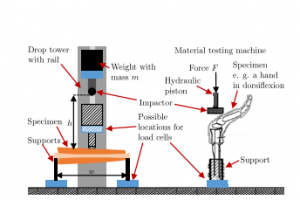![]() Mazin Hamad, Alexander Kurdas, Saeed Abdolshah, Sami Haddadin. Experimental Injury Biomechanics of Human Body Upper Extremities: Anatomy, Injury Severity Classification, and Impact Testing Setups. 2021 IEEE International Conference on Intelligence and Safety for Robotics (ISR) 2021 Mar 4 (pp. 310-315).
Mazin Hamad, Alexander Kurdas, Saeed Abdolshah, Sami Haddadin. Experimental Injury Biomechanics of Human Body Upper Extremities: Anatomy, Injury Severity Classification, and Impact Testing Setups. 2021 IEEE International Conference on Intelligence and Safety for Robotics (ISR) 2021 Mar 4 (pp. 310-315).

Abstract
Understanding the human body’s anatomical aspects helps capture key insights and gather increased information on the underlying human injury mechanisms, injury probability, and tolerance limits. Such knowledge, together with capable robots integrating safety-driven motion planning and control frameworks, enables the development of effective countermeasures for human arm/hand injury in robotics. In this work, thorough treatment for the anatomy, injury types, and severity classifications of human upper body extremities are provided. We also describe various impact testing setups and injury occurrence mechanisms encountered in sports, biomechanics, and forensics literature. The gathered insights provide solid grounds for designing/planning interactive impact setups and robot tasks in a well-informed way regarding the injury biomechanics of the human body upper extremities and their tolerances.
@inproceedings{kirschnerexperimental, title={Experimental Injury Biomechanics of Human Body Upper Extremities: Anatomy, Injury Severity Classification, and Impact Testing Setups.}, author={Hamad, M. and Kurdas, A. and Abdolshah, S. and Haddadin, S.}, booktitle = 2021 IEEE International Conference on Intelligence and Safety for Robotics, year = {2021}, }
